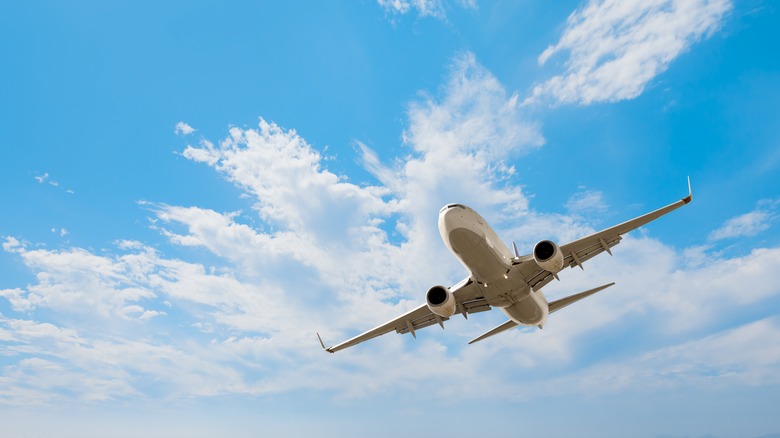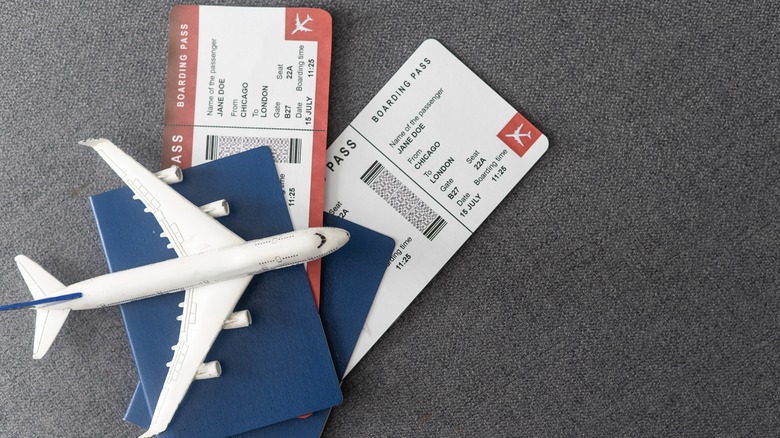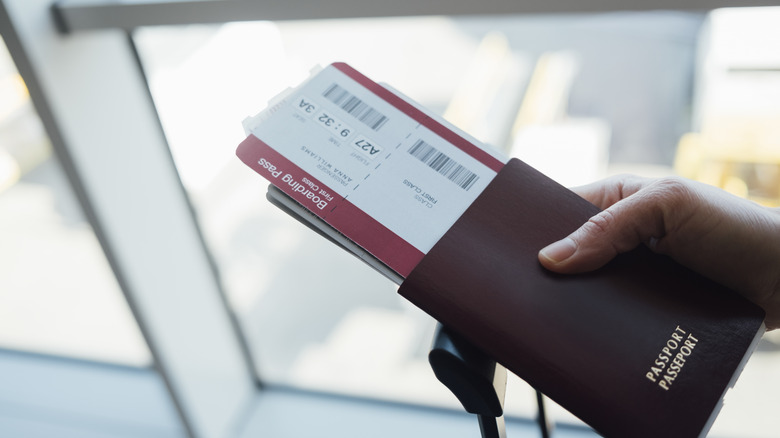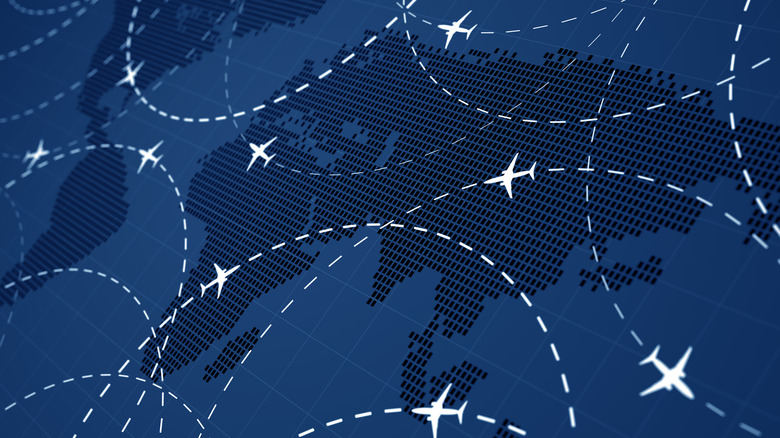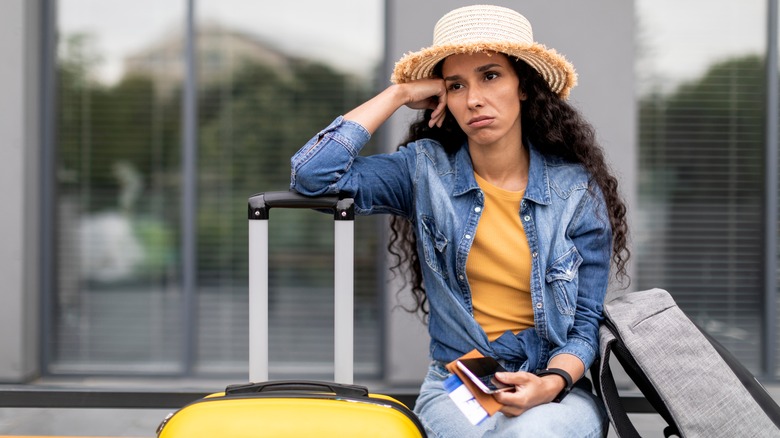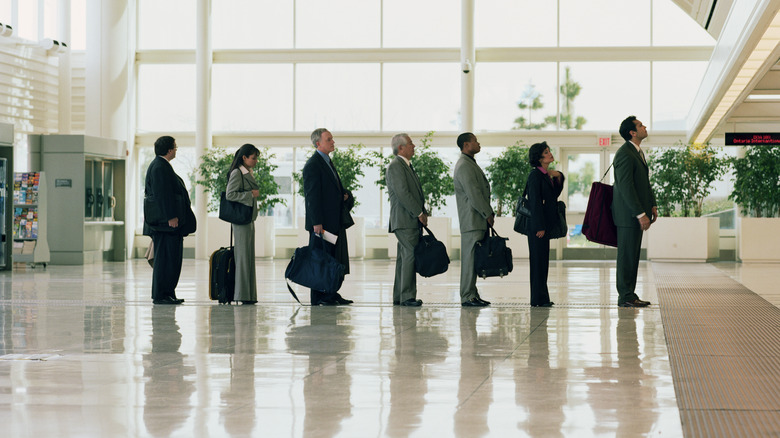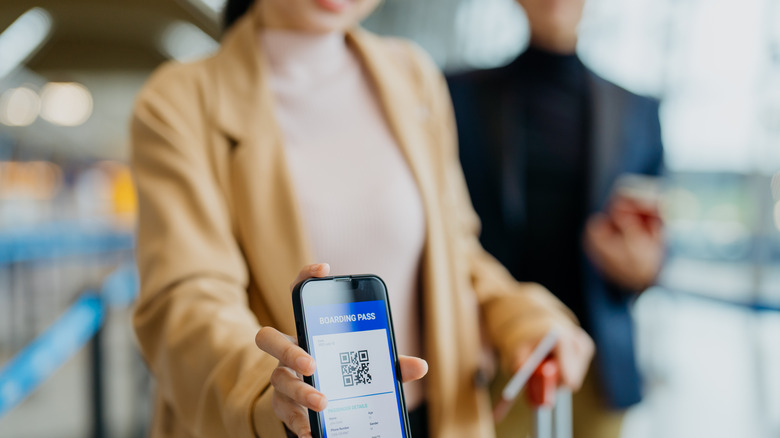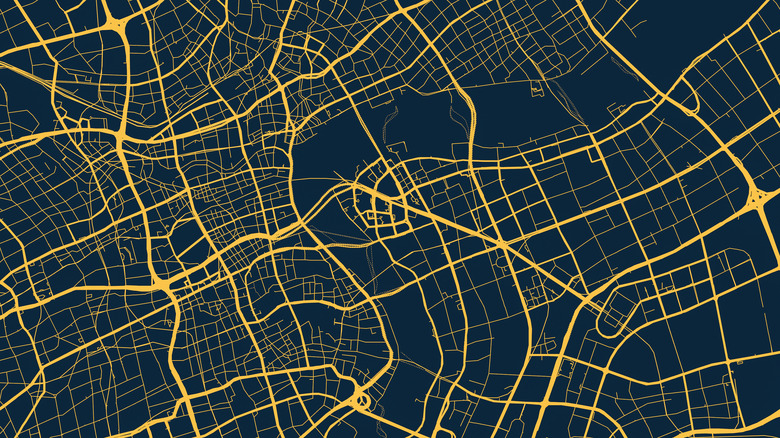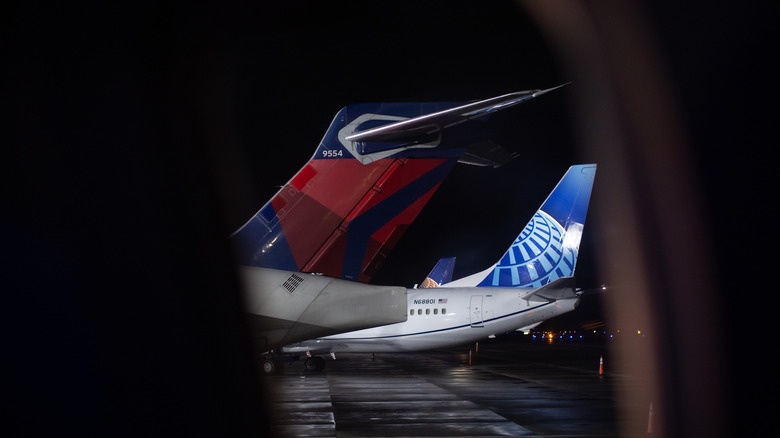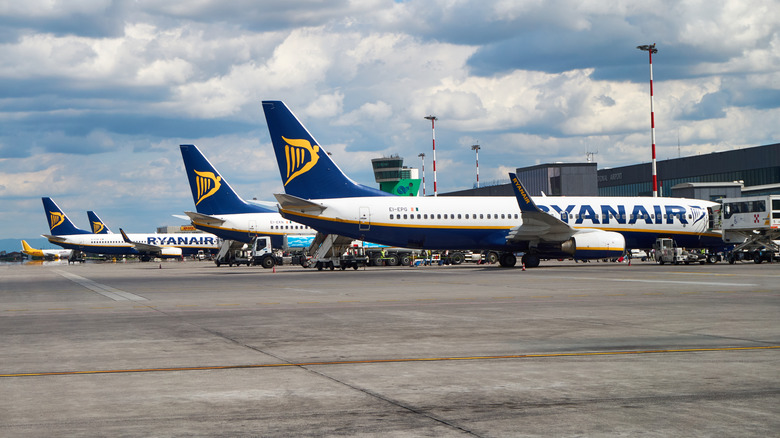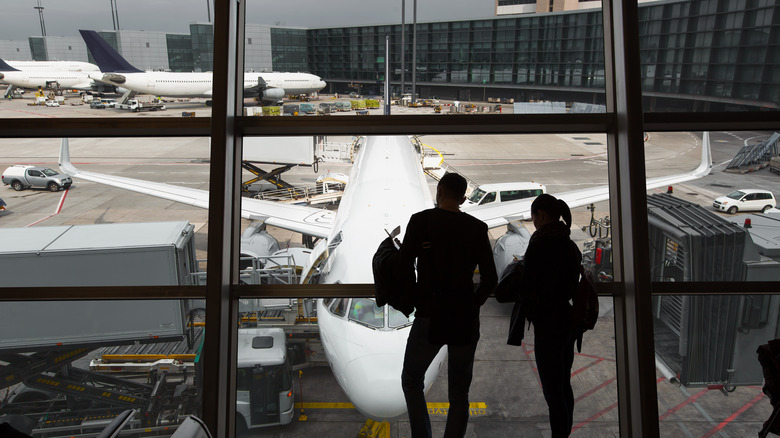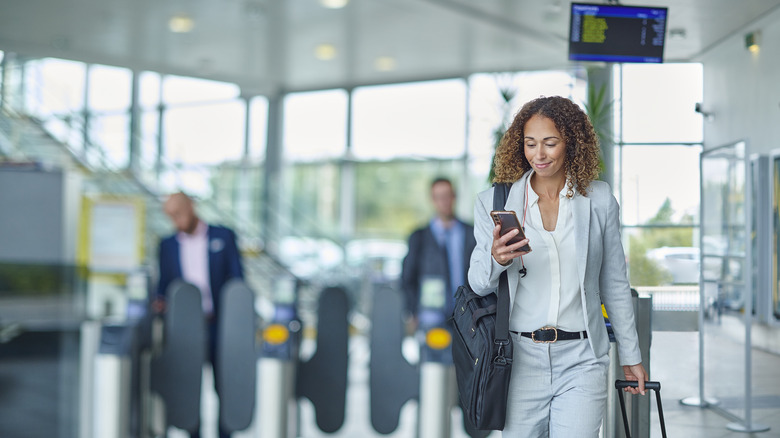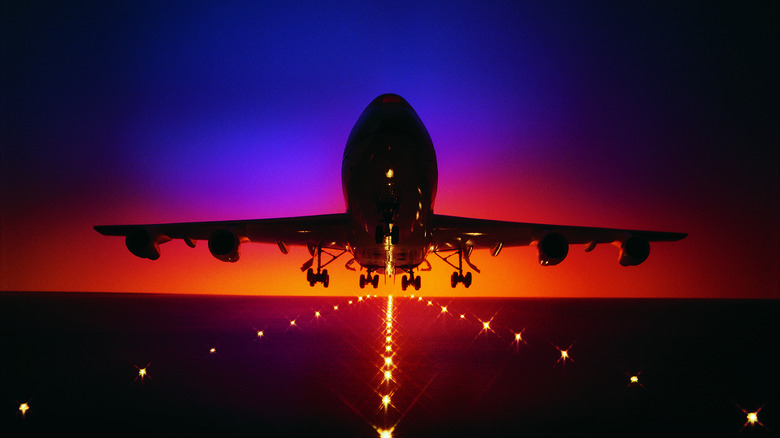Sneaky Ways Airlines Trick You Into Spending Money
Finding great prices on airline tickets is becoming a true chore. Anyone who has spent time in an airport recently is bound to notice a few subtle ways in which the experience has gotten a little less comfortable, and quite a bit more expensive. From added baggage fees that seem to continue getting more expensive to charging for snacks onboard the plane, the wonderful experience of traveling by air is becoming far less wonderful.
One reason for this shift can be found in the increasingly sneaky practices that airlines use to ramp up their profits at the expense of travelers. From creating new fare classes designed almost exclusively to trick buyers to overbooking flights, the air travel industry is becoming slimier in its approach. These strategies have become winners for airlines across nearly all categories (from small, budget carriers to gigantic airlines) and showcase the depths to which some will sink to make a quick buck. Fortunately, even with a few new tricks to get customers to part with extra money, travelers have effective measures of their own to keep costs as low as possible while still getting the best travel options out there.
Airlines make differentiating the true cost of fare classes tough
Perhaps the most obvious tool that airlines have at their disposal when attempting to create additional profit is cabin class. Once upon a time, travelers would book a first-class ticket or a seat in coach with few exceptions to these two cabin sections. Today, travelers are inundated with slight variations in coach seating, often with little explanation as to the differences.
To make matters worse, while bare-bones fares and varying amenity options have been popular with budget airlines for years, established brand names have also been getting in on this action. Often, airline booking pages differentiate the amount of legroom offered by seat types and any inclusions that may or may not be a part of the fare category when it comes to baggage, personal items, and other perks like early group boarding. The occasional traveler may ultimately have a tough time understanding what kind of ticket they need to buy to receive their desired experience. The result is a feeling of unease throughout the entire flight purchasing process that can easily result in snap decisions and underinformed choices that lead to increased costs for consumers.
Decision fatigue plays a major role in ticket purchases
Not only are fare categories becoming more differentiated, but airlines have been slowly ramping up the number of decisions a flyer must make between searching for flights and purchasing their selections. Adding on baggage, picking a seat, declining to use the airline's offers for ground transportation, hotel booking services, or car rentals, and more make for an increasingly confusing experience for travelers just looking to plan a holiday or visit family. All of these questions and options are designed to give buyers "decision fatigue." Making the flight booking process as long and arduous as possible creates a kind of whiplash for travelers with the ultimate goal of lowering a buyer's defenses and making upselling just a little bit easier.
Paired with these seemingly unimportant and annoying decisions is the use of a technique called "drip pricing." Rather than placing the total cost upfront, airlines introduce small charges throughout the buying process to make the cost seem lower at the start while adding to the total expense as a reservation progresses. These come in the form of seat selection charges, baggage fees, and even upgrade offers after a cabin selection has been made.
Fare rates are built to upsell flyers
Cabin selection isn't the only piece of the decision process that travelers must face. Most people who have flown before are familiar with messages on booking sites that indicate just a limited number of seats left at a certain price. Experts in the industry routinely call out this practice as a complete fabrication. This number is designed to create a perceived scarcity for buyers who may be on the fence about which airline to use or what day to fly. Pressuring travelers to buy flights now rather than later is another tactic that airlines use to force travelers into spending more.
However, it's worth noting that airlines do often utilize varying fares for the same ticket. This is part of an adaptive sales system designed to maximize profit on every flight segment completed. But with this difference in pricing comes a system function that hurts consumers. If an airline has just one ticket left at fare class A, and a traveler looks to book two tickets, the airline will offer up two tickets priced at fare Class B rather than providing one ticket at each price point. As a result, no matter where you're flying it's always a good idea to look up tickets individually before finalizing travel details.
Airlines are often overly picky on bag sizes
Many airlines are extremely picky about bag size. Anecdotally, there used to be a mindset of allowing on whatever bags a traveler was able to pass the check-in staff and security with. They were often not very concerned with the size of a carry-on bag, so long as it wasn't obviously built for the hold beneath and fit in the overhead compartments. This couldn't be further from the truth today.
Airlines have equipped their staff with the ability to charge travelers at virtually any point in their journey through the airport. Flyers can be delayed at the boarding gate and forced to pay significant upcharges if the gate attendant doesn't like the look of a carry-on bag or thinks that a personal item is just a bit too large and therefore counts as a second carry-on. There have even been horror stories floating around the internet in which gate agents force travelers to pay for carry-on items that fit inside the sizing bins at the gate. It's come to light that some airlines offer their flight attendants a commission on these charges, providing a compelling backstory to the mounting number of complaints that flyers make about this practice.
Airlines attempt to use 'social proof' to upsell add-ons
"Social proof" is a concept that sits in the crossroads of economics and psychology. This field is known as behavioral economics and attempts to understand how consumers can be influenced into spending more money, often through trickery and subtle psychological cues. Social proof is one of these tactics and it's sadly something that consumers are seeing more of in a variety of spending environments. At the tail end of the checkout process, airlines often advertise insurance products to cover the cost of the ticket (among other add-ons). In this day and age, most people overlook that insurance or opt to use their own travel insurance coverage rather than one offered by the airline. But attached to this insurance offer is a number. Airlines will often claim something like: "53 people protected their purchase in the last hour."
This strategy is prominent among Ticketmaster sales as well. It's a means of artificially creating a justification to spend more. If a bulk of buyers purchased the additional insurance product — or anything else offered by the seller, for that matter — then there's a reason to pause and consider buying the add-on, right? Unfortunately, this is just a ploy, creating an artificial reason to spend more money.
Many have started charging to print boarding passes
Because checking in at the airport was once a standard practice, having your boarding pass printed and handed to you was a common part of the experience. Even when checking in online, if you are checking a bag there's a good chance the ticket agent will still print your boarding pass while you stand in front of them.
However, to increase profits by any means necessary, some airlines have adopted the practice of charging for check-in and boarding pass printing. This is often a strategy utilized by budget airlines. The idea is that all passengers are expected to check in online, reducing the number of staff required at the desk — another cost-cutting measure for the airline. Anyone who doesn't check in on time is therefore forced to show up at the check-in desk and pay additional fees to get on the flight, including those for printing a boarding pass that can no longer be downloaded. These fees can be exorbitant, so if you're flying on a budget airline it's important to understand the obligations you signed up for. Check-in often starts 24 hours in advance, regardless of airline, so making sure you avoid the cost of this extra money grab is often just a matter of planning ahead.
They advertise different prices for individual local markets
Another surprising tactic that airlines fall back on is the use of different pricing structures for different locations around the country and globe. Researchers exploring trends in the air travel marketplace have uncovered the fact that the same flight segments can be priced at different costs depending on where the buyer is located. Using a VPN, travelers can explore the same itinerary from different IP locations and take advantage of potentially lower costs for the exact same flight.
However, it's worth noting that not every flight will be priced differently depending on location. Also, a reduced fare found via your VPN connection doesn't guarantee that the next flight you book will be similarly reduced when using that same geographical workaround. In truth, there's little that travelers can do to combat these varying prices based on geography because the way airlines price air flights in this regard is constantly fluctuating. It's still worth knowing, and travelers may want to utilize a quick VPN search through a few connection points, including the intended destination of travel to see if a better deal can be found.
Airlines work tirelessly to prevent travelers from booking with multiple carriers
Airlines are also notoriously hard to work with for travelers attempting to book multiple segments with different carriers. It's typically very difficult to book a single itinerary that utilizes non-partner airlines to get the best deal. By scouring the marketplace to find the cheapest flights to get from point A to point B, travelers may often find that a change of airline would save a notable amount of cash. But it's likely impossible to book this as a single trip. The result is that checking bags becomes incredibly difficult, if not cost-prohibitive, and making connections with the added requirement of multiple check-ins can turn a functionally achievable itinerary into a tall order.
There are some options available to travelers who want to mix and match carriers. One way to achieve this is to book an outbound flight with one airline and a return as a separate itinerary with another. For travelers with frequent flyer accounts or branded airline credit cards, getting free bags on both itineraries is a possibility. Another option is to forego the use of checked bags altogether. Checking in online for each flight may be possible because of the lengthy window before takeoff, but you'll need to be flying without additional baggage which will require leaving the security area to check in again. For lengthy international travel, connecting to in-flight Wi-Fi may be required to hit the check-in window for your second flight.
Budget airlines often offer wildly different prices on outbound and return flights
Many budget airlines are quick to tout their low prices on certain routes. Budget carriers make their money with quick turnarounds, heaps of flight segments that bring huge volumes of travelers from place to place, and bare-bones service operations. But they also cash in on travelers' ignorance of their trickery.
One common theme in this arena is the advertisement of rock-bottom pricing for one-way flights. A traveler might get a huge discount on their selected outbound itinerary only to come face to face with a price ten times as high for the return. Alternatively, these airlines may offer two flights per day to select destinations with the first leaving at the crack of dawn for a great price and the next taking off just a few hours later but at a steep markup. This can be particularly frustrating for those going on vacation. Taking time off work to go away with your family and then having to cut the last day out entirely to catch a budget flight or pay through the teeth for a reasonable time is a real gut punch.
Airlines are notorious for overbooking flights
Overbooking flights has become such a rampant issue that some experts suggest that for every 100 seats advertised across the air travel industry, 150 tickets are sold. Airlines defend this practice by claiming that a notable volume of travelers don't show up for flights or even engage in practices like skiplagging. Overselling a flight means that airlines have full flights on nearly every segment they fly, even when people don't show up. Sometimes an airline will even go so far as to claim that this practice is better for the environment. Overbooking a flight doesn't necessarily encourage individual travelers to overspend with the airline itself, but the consequence of an overbooked flight can easily force travelers to spend more than anticipated because of a delay or refused boarding.
Issues with getting a plane off the ground that result in overbookings can see travelers stranded in a transit city overnight, forcing them to spend money on food and lodging. This is money that may or may not be reimbursed, but one thing airlines won't eat the cost of is any financial loss from reservations in a destination city. The harsh reality is that you're often out of pocket and largely out of luck if the airline bounces you off your flight just so that they can hedge their profits.
Frequent flyer programs have largely shifted to a cash spend model
Airline rewards programs are also shifting in the current marketplace. Many airlines partner with credit card companies to offer branded rewards cards. In addition to rewarding customers for flying frequently, airlines offer points for purchases that are ultimately redeemable for flights, baggage, and other necessities at the airport.
However, airlines have begun to shift away from rewards earned primarily on actual flying. Instead, status upgrades and reward points are coming only through spending habits. The result is that frequent travelers are incentivized to spend more in everyday life. To take advantage of all the perks available to loyalty customers, airlines are looking to create a more spending-centric relationship that can easily spell trouble for consumers looking to balance perks with routine budgeting requirements. Moreover, people looking to make reservations for future travel through their existing points balance are incentivized to purchase more points directly with the airline to make up the difference that may be required. There are all kinds of points-buying schemes that airlines have cooked up to increase profits and cement the relationship in which consumers are spending money that ultimately flows back to the airline, regardless of whether they're actively traveling or not.
How to spend less on airfare
There are plenty of ways to reduce the cost of travel, and they begin with divergent approaches. On the one hand, brand loyalty can help reduce the cost of things like seat selection and baggage. Branded credit cards and membership accounts unlock a wealth of perks including lounge access, early boarding, free checked baggage, and more.
Alternatively, shying away from true brand loyalty is often the best way to get great deals on air travel. Strategies like skiplagging, individual flight segment bookings, and open-jaw tickets that see you traveling out and back from different airports or cities can make for significant reductions in the overall cost of air travel. Skiplagging is a particularly valuable tool, but it comes with a warning. Skiplagging is the strategic booking of a flight itinerary that has a layover in your true destination. On occasion, it'll be far cheaper to book a second flight from your intended destination as part of the itinerary rather than just one that stops where you want to go. Airlines prohibit this strategy and have even attempted to prosecute travelers suspected of skiplagging. So keeping a low profile when engaging in the practice is a must. The reality is that certain loyalty programs can be valuable when looking for low-cost and still comfortable air travel, but airlines have become far less loyal to their customers in return. As a result, shopping around and looking for any advantage you can deploy is a must.
